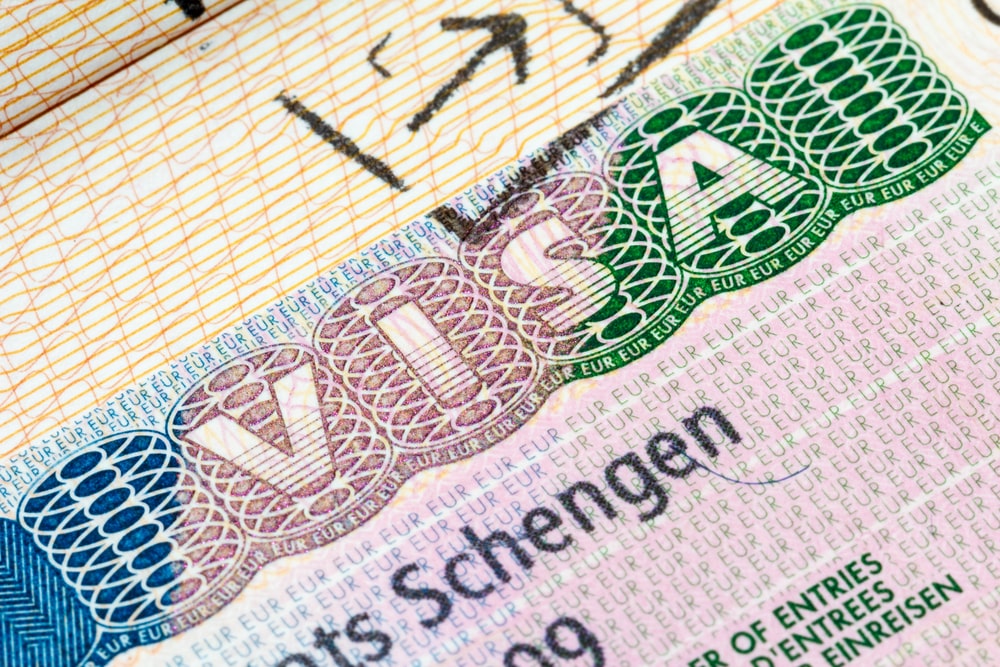If you’re planning a Europe holiday, you might’ve heard of Schengen visa already. There are certain new visa rules in 2020 that might change the way you apply for a Schengen visa. Know this before getting started on your Europe trip!

First things first. The Schengen area comprises 26 European countries that have standardized their visa policy and act as a single zone for tourism purposes. You need a Schengen visa to travel within or across any of the Schengen regions for a period of 90 days.
The 26 Schengen visa countries are – Austria, Belgium, France, Germany, Spain, Sweden, Switzerland, Greece, Czech Republic, Denmark, Estonia, Finland, Hungary, Iceland, Italy, Lithuania, Luxembourg, Malta, Netherlands, Norway, Latvia, Liechtenstein, Poland, Portugal, Slovakia, and Slovenia. Now let’s dive in.
Note that you may or may not need a Schengen visa to access the Schengen countries depending on your type of nationality and visa category. Check here if you need a Schengen visa. And that doesn’t include you, Indian passport holder! You definitely need a Schengen visa. Read ahead, we are breaking it down for you 🙂
New Schengen visa rules in 2020
1. Let’s start with the most beneficial news – Eased rules for multiple-entry Schengen visas for Frequent Europe travellers
Frequent travellers to Europe are now eligible for a multiple-entry Schengen visa valid for up to 1, 3 or 5 years based on how clean their visa history is. The only catch? You should not stay for more than 90 days within a span of 180 days. Although this rule existed earlier, the parameters are clearer and more defined now.
Checklist to get a multiple-entry Schengen visa:
- The applicant should have obtained and used Schengen visas thrice in the previous two years (and more for getting 3 & 5-year valid visas).
- Positive visa history is mandatory.
- The applicant should have clear reasons for visiting multiple times within the validity period.
- It’s mandatory to have proof of strong financial status.
- The applicant needs to apply and get travel insurance for the first trip with the multiple-entry Schengen visa.
2. Increased cost of Schengen visa applications
You now need to pay 80 Euros per application where you used to pay 60 Euros. And for children of 6-12 years of age, the fee has hiked from 35 Euros to 40 Euros. This is not bad news as Schengen visas still cost much lower than other country visas.
3. Necessity to apply six months in advance
With the new rule in effect, you can apply for a Schengen visa six months in advance before your trip — not 90 days. This is very beneficial for travellers who have their travel dates ready much in advance. The latest you can apply for a Schengen visa is 15 days before your trip, although the visa success rate hugely varies.
4. Facility to fill, sign and submit the visa application completely online
Starting February 2, 2020, you can sign your Schengen visa application electronically and submit it online. Ensure that the sign is recognisable, and matches the sign in your original documents.
Now that the visa process is clear, it’s time to plan your big Europe holiday — choose from these handcrafted Europe itineraries from Pickyourtrail!
Planning a last-minute trip? Why not, we have an exclusive set of itineraries for visa-free countries to travel to. Don’t wait any longer!
COVID-19 related measure you should know
The surge in COVID-19 cases across all European countries and new variants of the same in Indian subcontinent had left the travel desire in pause. However, with a decreasing trend in the Covid graph, all the Schengen associated countries have begun to reopen their tourism gate but with fortified hygiene measures. The introduction of EU digital COVID-19 passports from July 1, 2021 has enabled easy monitoring of the travellers. All the travellers across the world can travel to Europe without any quarantine restrictions if
- The traveller has been fully vaccinated against COVID-19. The observation period of 7 to 14 days should be observed after their second dose of vaccine.
- The traveller must carry a negative PCR test result taken within 48 to 72 hours of departure.
The vaccines recognised by European countries include Pfizer (Comirnaty), Moderna, AstraZeneca (Vaxzevria), and Jonhson & Jonhson (Janssen). Travellers vaccinated with a second dose of vaccine from either Pfizer, AstraZeneca or Moderna will now be considered fully vaccinated. The observation period has now been reduced from 14 to 7 days in some countries. Now, Covishield also gets included in the list of vaccines trusted by the European government.
It is however mandatory to wear masks in all public places and maintain social distance to protect yourself and others.
Checking the official website for the latest updates before you plan to travel is highly recommended.
Updated as of July 23, 2021. Please check the visa rules before applying as they are subject to frequent changes.
Related Itineraries

Stunning 6 Nights Northern Lights Packages
- Flights excluded
- 4 star accommodations
- 3 activities
- Transfers excluded
₹ 64,954
Starting price/person

Fantastic 6 Nights Finland Northern Lights Tour Package
- Flights excluded
- 4 star accommodations
- 2 activities
- Shared transfer
₹ 69,369
Starting price/person

Beautiful 10 Nights Italy Honeymoon Package
- Flights included
- 4 star accommodations
- 9 activities
- Private transfer
₹ 1,32,869
Starting price/person

Ideal 6 day Switzerland Tour Packages for Family
- Flights included
- 3 star accommodations
- 3 activities
- Shared transfer
₹ 99,112
Starting price/person

Romantic 8 Nights Bali and Vietnam Honeymoon Packages
- Flights included
- 4 star accommodations
- 6 activities
- Shared transfer
₹ 99,947
Starting price/person

Gorgeous 9 Nights Singapore Bali Honeymoon Packages
- Flights excluded
- 4.5 star accommodations
- 6 activities
- Shared transfer
₹ 90,953
Starting price/person

Magical 9 Nights Germany Vacation Packages
- Flights excluded
- 4.5 star accommodations
- 8 activities
- Private transfer
₹ 79,832
Starting price/person

Scenic 10 Nights Greece & Turkey Vacation Packages
- Flights excluded
- 5 star accommodations
- 6 activities
- Shared transfer
₹ 60,718
Starting price/person

Magical 7 Nights Croatia Tour Packages
- Flights excluded
- 4 star accommodations
- 10 activities
- Shared transfer
₹ 57,778
Starting price/person

Beautiful 10 Nights Amsterdam Tour Package
- Flights excluded
- 4 star accommodations
- 8 activities
- Private transfer
₹ 1,84,115
Starting price/person



